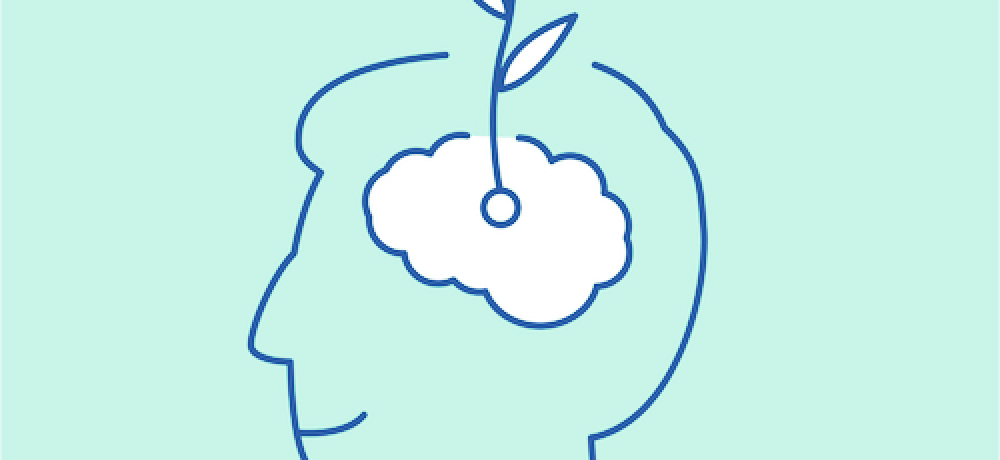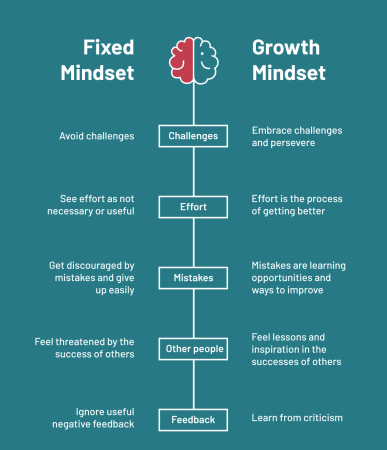
Growth Mindset Fundamentals: Are You Running From or Towards Difficulty?
“Why waste time proving over and over how great you are when you could be getting better” – Carol Dweck
The History of Growth Mindset fundamentals
Do you believe that our intelligence can grow? There’s been a lot of research on the flexibility and changeability of intelligence. Growth mindset is the belief that our intelligence is malleable through personal effort, good learning strategies, and support. The passion for stretching yourself and sticking to it, even (or especially) when it’s not going well, is the hallmark of the growth mindset. This mindset allows people to thrive during some of the most challenging times of their lives.
The term Growth Mindset arose from years of research by Carol Dweck, Stanford professor and leading researcher in motivation and mindset. However, the idea of human and mind flexibility is as ancient as Giovanni Pico della Mirandola’s Manifesto of the Renaissance from 1496 where he states that human dignity is located in our ability and freedom to change and express ourselves in different ways and that it is the only eternal thing.

Attribution Theory
Let’s dive deeper into the Growth Mindset fundamentals and its origins. Growth mindset builds upon principles of the attribution theory which proposes that people try to find explanations for what happens to them and that these explanations then shape their reactions. For example, when you get a promotion do you assume it is the result of your hard work or the result of favoritism? You can go either way, external (or situational) attribution is the association of events and behaviors to outside stimuli. Contrastingly, internal (or dispositional) attribution is the association of events and behaviors to insider stimuli. Attributions are closely linked to cognitive biases such as the fundamental attribution error and self-serving bias.
Achievement Goal Theory
From the perspective of attribution theory, Carol Dweck and her colleagues started researching learned helplessness and responses to setbacks. They found that of children with equal ability, their attributions can predict “helpless” or “mastery-oriented” responses to setbacks. This finding could, however, not explain why students of roughly equal ability show such different attributions and reactions. The question of “why” led to the development of achievement goal theory which focuses on competence-related goals.
According to this theory, goals are future-focused cognitive representation that guides behavior. Performance versus mastery goals can explain the different reactions and attributions to the same outcome. Performance goals focus on performing well, whereas mastery goals focus on learning and understanding. Those who adopt a mastery goal tend to view their abilities as a flexible trait that can be developed. Contrastingly, those who adopt a performance goal tend to view their abilities as a fixed trait that cannot be enhanced.
Implicit Theories of Intelligence
After the achievement goal theory had been developed, the question of why children of equal ability differed in their desire to prove themselves and their ability remained. This led to the development of mindset research. Bandura and Dweck, the researchers working on mindset theory, figured that our ability to prove ourselves is different from our ability to better ourselves. This finding led to the development of implicit theories of intelligence. Implicit theories of intelligence refer to one’s belief regarding whether or not intelligence and abilities can change.
Dweck quickly named these two implicit theories the entity and incremental theories (later renamed fixed and growth mindset). According to the entity theory, intelligence is a personal quality that is fixed and cannot be changed. According to the incremental theory, intelligence is a malleable quality that can develop through conscious effort. These theories help understand challenge seeking and resilience even better. Why are some people running from difficulty while others run to it?
Dweck proposed that one’s mindset organizes goals, attribution, helplessness, etc… into one meaning system. A meaning system is a mental way of bringing together beliefs and behaviors into an organized function. Robins and Pals (2002) found direct paths from mindset to goals, attributions for academic outcomes, and helplessness to setbacks. Dweck and colleagues (2007) also found these direct paths in a different study. Then, they added the idea of effort beliefs which is the belief that effort is a positive thing that helps you grow as opposed to a negative thing that demonstrates a deficiency in ability. As such, people differ in their meaning systems and effort beliefs depending on whether they are in a fixed or growth mindset.
Looking at abilities as fixed means that we value performance goals and avoid challenges as a way to validate abilities and attribute setbacks to abilities. This kind of mindset hinders persistence. In contrast, someone in a growth mindset values developing abilities by taking on challenging learning goals, and effort is seen as a tool to aid in this achievement whereas setbacks are information in the learning process. This kind of mindset fosters persistence. The passion for stretching yourself and sticking to it, particularly when times are rough, is fundamental to a growth mindset. Growth Mindset is best summarized by the metaphor that our brain is like a muscle that gets stronger with exercise.
After delving into the history of growth mindset, only one question really remains – where do the different mindsets come from? Your mindset is rooted in your experiences, education, and culture. The way we praise success (person versus process) has been linked to mindsets. Person feedback, as opposed to process feedback, leads to a greater belief in stable traits and in greater helplessness in the face of criticism or failure. Besides feedback, there are plenty of other ways to foster a growth mindset including the strategy known as the “power of yet”.
Recap
The concept of growth mindset was developed based on principles and findings from attribution theory, achievement goal theory, and implicit theories of intelligence. Our perception of events (attribution) guides our behaviors and this forms the basis for growth mindset. Our focus orientation in goal-driven behaviors directs our responses to setbacks, this finding further defined the principles of growth mindset. Lastly, our beliefs on whether or not intelligence and abilities can change led to the development of entity and incremental theories which later were renamed into growth and fixed mindsets.
Interested in what these Growth Mindset fundamentals can do for you? Check out our article on tactical implementations you can introduce to cultivate a growth mindset!
We hope this article was useful to you and if you’re looking for a behavioral business partner who can drive change in your organization, we’d love to schedule a call or coffee. If you want to learn more about behavioral insights, read our blog or watch 100+ videos on our YouTube channel!
About Neurofied
Neurofied is a behavioral science company specialized in training, consulting, and change management. We help organizations drive evidence-based and human-centric change with insights and interventions from behavioral psychology and neuroscience. Consider us your behavioral business partner who helps you build behavioral change capabilities internally.
Since 2018, we have trained thousands of professionals and worked with over 100 management, HR, growth, and innovation teams of organizations such as Johnson & Johnson, KPMG, Deloitte, Novo Nordisk, ABN AMRO, and the Dutch government. We are also frequent speakers at universities and conferences.
Our mission is to democratize the value of behavioral science for teams and organizations. If you see any opportunities to collaborate, please contact us here.
